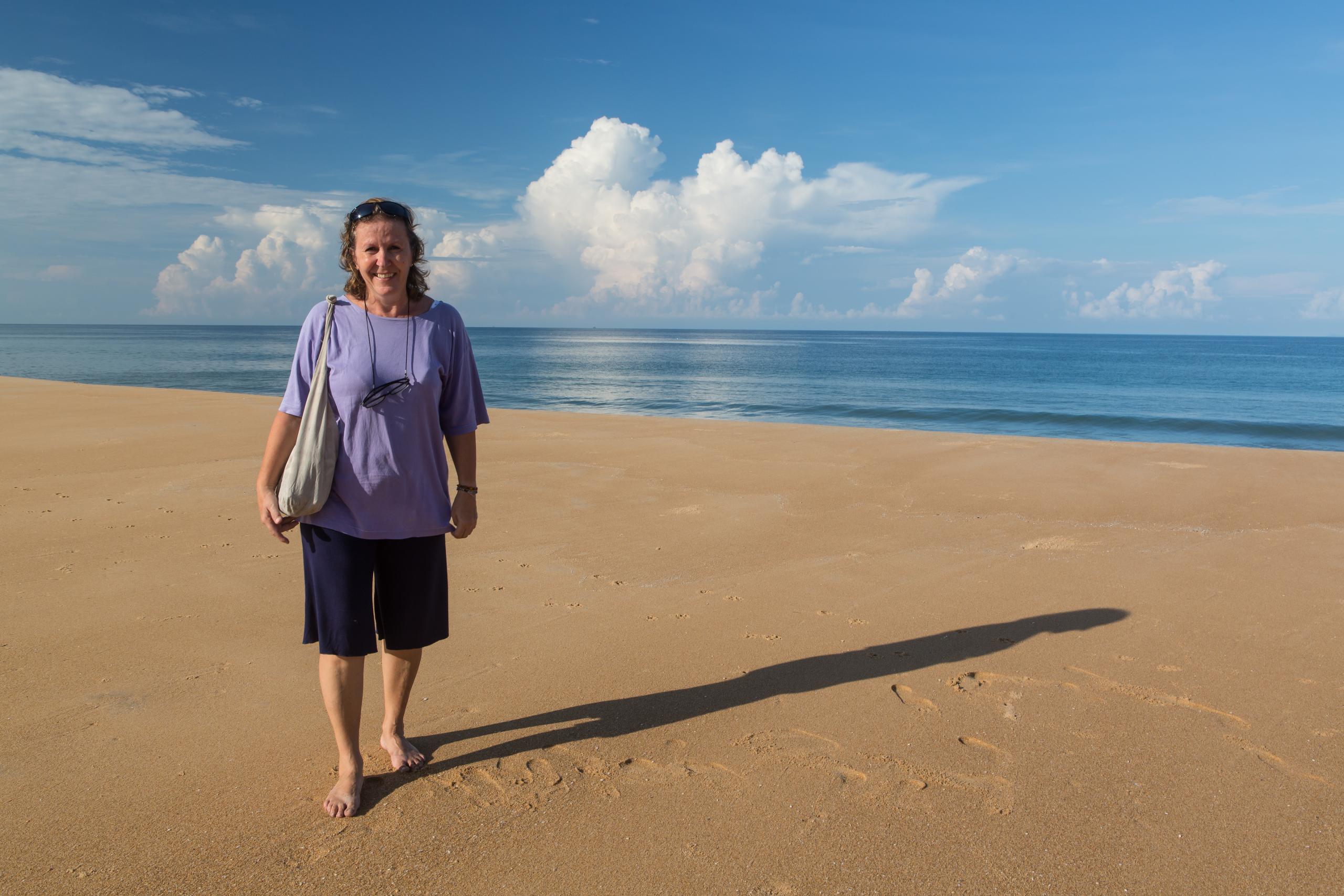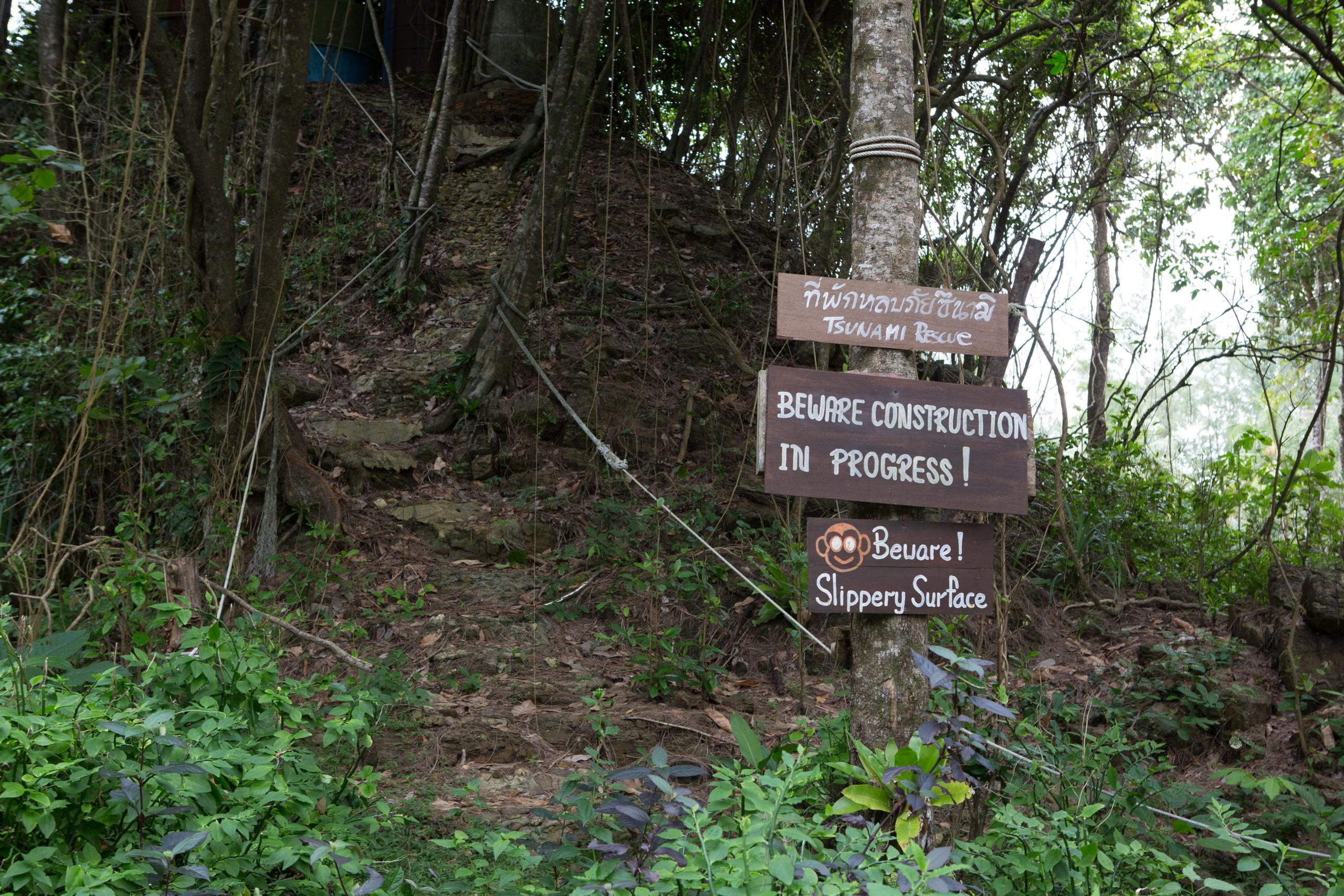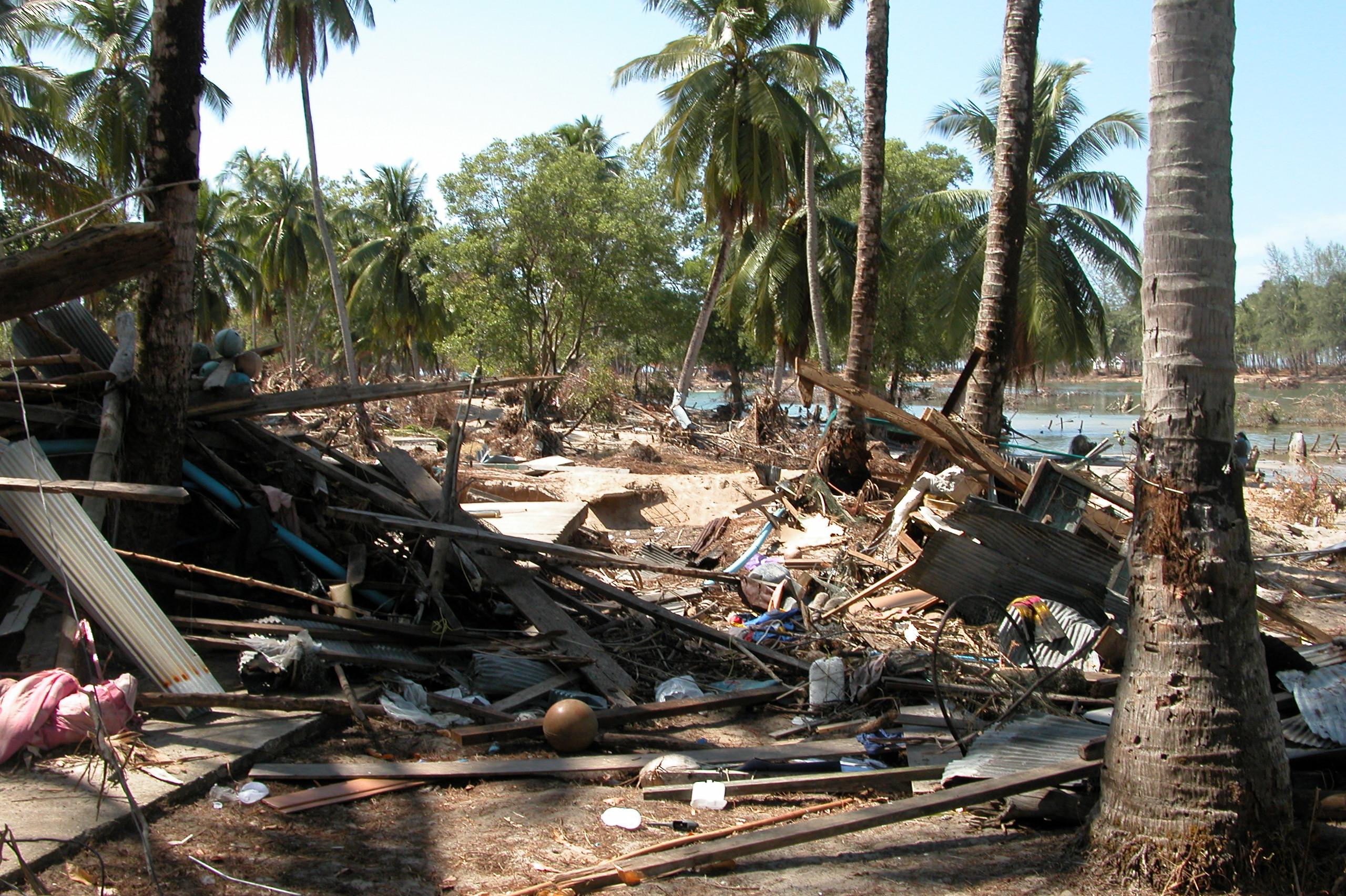‘I don’t trust the sea anymore’

Lory Follador, an Italian-speaking Swiss, saw a huge wall of water pound the beach of an island in southern Thailand on December 26, 2004. She says it is sheer luck that she can tell her story, ten years after an estimated 225,000 people were killed by a tsunami in south-east Asia.
Boxing Day 2004: Follador has just woken up, having had a weird dream. The images still linger in her head: thousands of dead bodies but not a drop of blood. This has never happened to her before.
This is a bad omen, her Thai husband warns her. But Follador, 52 at the time, has too many other things on her mind to pay any attention. It was just a bad dream after all.
On the island of Ko Phra Thong, December 26 begins like any other day. The sea is calm and tourists sit on the beach.
Just before 10am, Follador, manager of a holiday resort since the mid-1990s, is about to go to a work-related meeting. Nobody is aware that 30 minutes earlier a series of abnormally high waves hit Phuket, a popular tourist destination 150km south of Ko Phra Thong.
On her way to the office Follador hears a loud noise. Her first thought is that it’s a plane crash. In fact, a first, smaller wave has hit the resort. The water covers the whole shore, up to the line of coconut trees, and then retreats again.
It is an odd occurrence for Follador, who grew up in Ticino as a daughter of Italian parents, but she is not overly alarmed.
Several tourists move their towels closer to the sea line to be able to jump into the water. At the same time she notices a man with his eyes fixed on sea. Then comes a big wave, but hardly anybody pays any attention.
Then a girl who has lived in Hawaii shouts to the others: “Run, it’s a tsunami!”
Follador makes out a long white line on the horizon. It’s the crest of a wave. Instinctively, she picks up her 13-month-old son and starts to run towards the mangrove trees.
In the panic she stumbles and falls. When she gets up, she can’t believe her eyes: a wall of water about four storeys high is about to pound the island.
Night on a hill
Two fishermen come to Follador’s rescue. One of them picks up her son from the ground and points to a steep path between the rocks and the roots of the trees. The small group hopes to find shelter on one of the island’s small hillocks.
Follador sees a new wave approaching, then another and another.

On the hilltop people are in shock; nobody speaks and even the baby is quiet. They have been joined by several lemurs seeking refuge.
Follador is barefooted and notices bruises and cuts on her feet and legs, although she does not feel any pain. It’s the adrenaline.
About an hour later her husband joins her. It’s a big relief. When the tsunami hit the island, he was in an area protected from the water.
Follador can’t imagine leaving the hillock and spends the night in the open. Only when she sees the first dead bodies does she become aware of the sheer magnitude of the disaster. The tsunami kills a total of 13 people on that part of the island.
By chance
Ten years later Follador is back on the same beach. She still lives in Thailand but has moved with her family to the mainland not far from Ko Phra Thong. Together with her second son and husband, who owns a local building company.
“I could no longer sleep after the tsunami. Even the sound of the waves made me anxious,” she says.
“In the weeks following the tsunami there were a series of aftershocks and alarms. Once we fled to a nearby hill when a tremor measuring five on the Richter scale struck. Now we know that it takes at least an earthquake of magnitude seven to trigger a tsunami.”
Even today when she goes to Ko Phra Thong for business and has to stay overnight, she can’t go to bed without leaving her mobile phone on.
“On the island they set up a system of sirens. But I prefer to rely on my mobile. In the event of an emergency they call us or send a text message,” she explains.
Yet her attitude towards the sea has changed. “I used to be able to go for a swim in the big waves. I can’t do that anymore. I don’t trust the sea anymore.”
Follador says she survived only by chance. “Had I not tripped, the Thai fishermen would not have found me and I wouldn’t have made it to the hillock. I might have run for the mangrove trees with my son and both of us would have been killed. It seems my time had not yet come.”
(Adapted from Italian by Urs Geiser)

In compliance with the JTI standards
More: SWI swissinfo.ch certified by the Journalism Trust Initiative



You can find an overview of ongoing debates with our journalists here. Please join us!
If you want to start a conversation about a topic raised in this article or want to report factual errors, email us at english@swissinfo.ch.